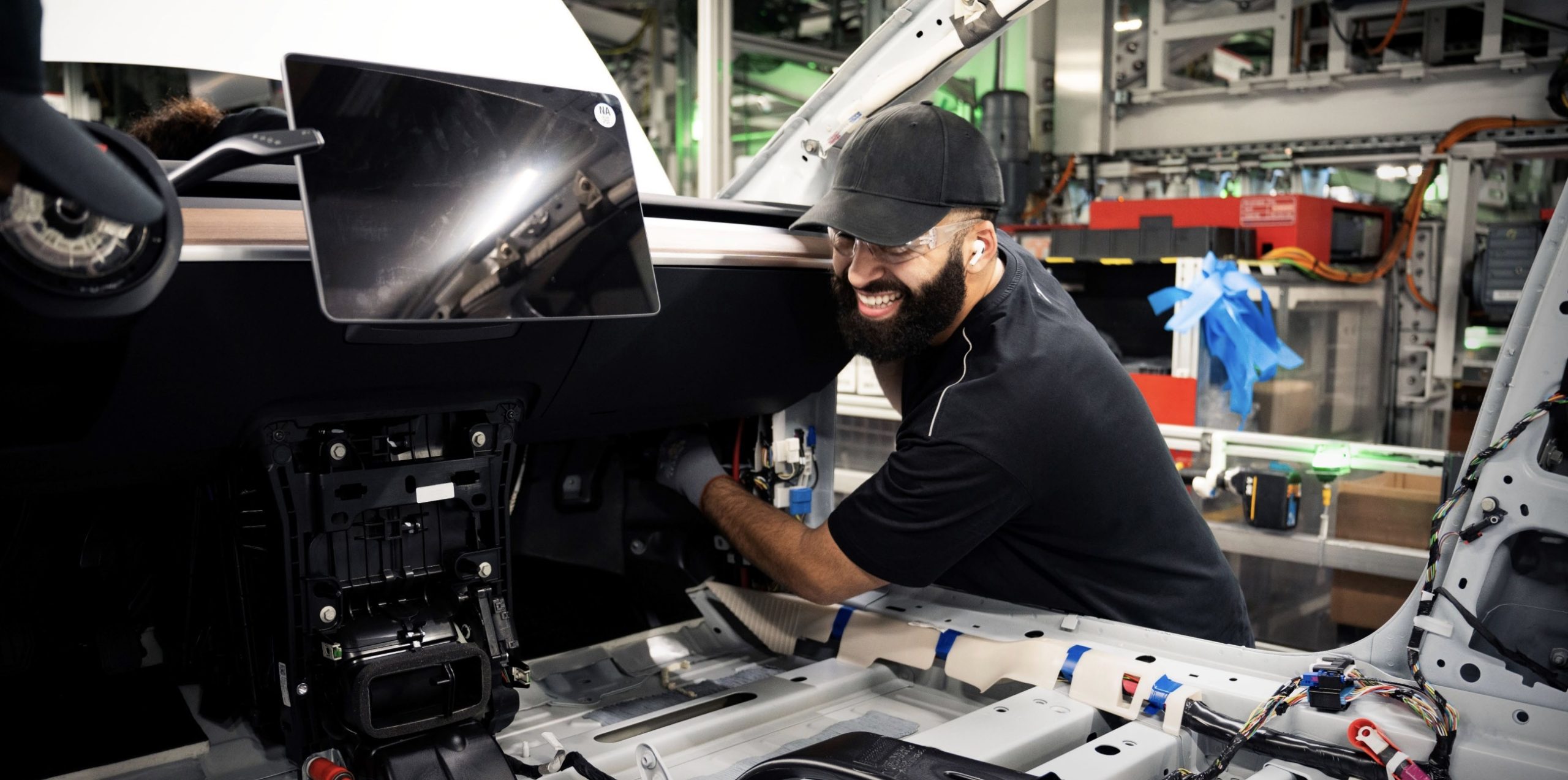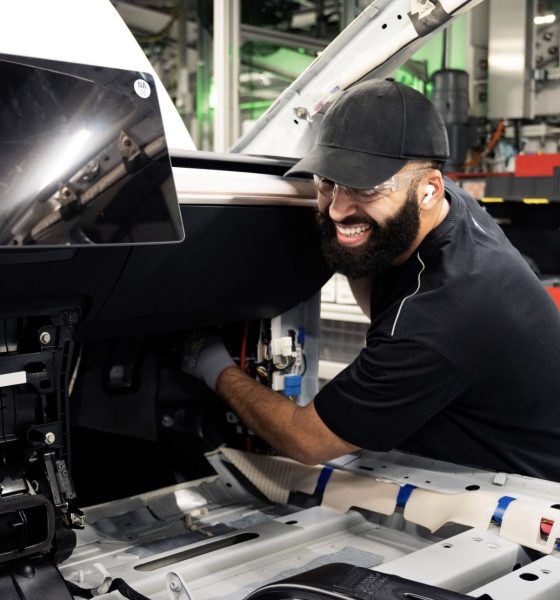

Investor's Corner
Tesla spent $583 million in employee termination expenses in Q2 2024
Tesla (NASDAQ:TSLA) has posted its SEC Form 10-Q for Q2 2024 on its Investor Relations website. The document, which provides a comprehensive unaudited report of Tesla’s financial performance during the second quarter, provided some important context on some of the electric vehicle maker’s results. These include the $622 million restructuring costs that were listed by the EV maker in its Q2 2024 Update Letter.
Tesla noted in its Q2 2024 Update Letter that its profitability and operating expenses were affected by restructuring charges worth $622 million. Tesla watchers observed that without this one-time charge, the company’s earnings per share would have been notably higher. For context, Tesla posted non-GAAP EPS of $0.52, lower than the Street’s expectations of $0.61-$0.62.
?Main driver of Tesla's miss was a giant one-off item of $622M for restructuring charges. We have to wait for the 10-Q but this will be mostly the 2Q headcount reduction! Without this item, EPS would be 58% higher!!! pic.twitter.com/jQv9rDY6Cn— AJ (@alojoh) July 23, 2024
Paul Marino, Chief Revenue Officer at GraniteShares, told Teslarati that Tesla’s $622 million restructuring charge definitely affected the company’s earnings per share. “The $600 million restructuring charge is definitely part of the EPS miss, and higher than the $350 million that was disclosed and expected as part of the layoff announcement… No one should be surprised by the quarter, even if they were hoping for a surprise,” Marino stated.
As could be seen in Tesla’s Form 10-Q, the lion’s share of the $622 million restructuring costs was allotted to employee termination expenses. Tesla recognized $583 million of employee termination expenses in Q2, which were likely triggered by CEO Elon Musk’s widespread workforce reduction efforts. While Tesla is expected to see savings from its restructuring, the company’s Form 10-Q suggests that it is quite expensive to fire employees.
10Q is out
Of the $622m restructuring expenses, $583m were for the layoff. pic.twitter.com/xYEuY8mF4e— Ale?andra Merz ?? (@TeslaBoomerMama) July 24, 2024
“In the second quarter of 2024, we initiated and substantially completed certain restructuring actions to reduce costs and improve efficiency. As a result, we recognized $583 million of employee termination expenses in Restructuring and Other in our consolidated income statement. These expenses were substantially paid during the quarter with the remaining unpaid immaterial accrual recorded in Accrued liabilities and other in our consolidated balance sheet as of June 30, 2024,” Tesla wrote in its Form 10-Q.
Tesla Chief Financial Officer (CFO) Vaibhav Taneja discussed the electric vehicle maker’s restructuring costs during his remarks at the Q2 2024 earnings call. “The impact of our recent reorg is reflected in restructuring and other on the income statement. Just to level set, this was about $622 million of charge, which got recorded in the period. And I want people to remember that we called it out separately on the financials,” Taneja said, though he also highlighted that Tesla reverted to free cash flow of $1.3 billion in Q2 “despite restructuring payments being made in the quarter, and we ended the quarter with over $30 billion of cash and investments.”
Don’t hesitate to contact us with news tips. Just send a message to simon@teslarati.com to give us a heads up.

Investor's Corner
Tesla stock closes at all-time high on heels of Robotaxi progress

Tesla stock (NASDAQ: TSLA) closed at an all-time high on Tuesday, jumping over 3 percent during the day and finishing at $489.88.
The price beats the previous record close, which was $479.86.
Shares have had a crazy year, dipping more than 40 percent from the start of the year. The stock then started to recover once again around late April, when its price started to climb back up from the low $200 level.
This week, Tesla started to climb toward its highest levels ever, as it was revealed on Sunday that the company was testing driverless Robotaxis in Austin. The spike in value pushed the company’s valuation to $1.63 trillion.
Tesla Robotaxi goes driverless as Musk confirms Safety Monitor removal testing
It is the seventh-most valuable company on the market currently, trailing Nvidia, Apple, Alphabet (Google), Microsoft, Amazon, and Meta.
Shares closed up $14.57 today, up over 3 percent.
The stock has gone through a lot this year, as previously mentioned. Shares tumbled in Q1 due to CEO Elon Musk’s involvement with the Department of Government Efficiency (DOGE), which pulled his attention away from his companies and left a major overhang on their valuations.
However, things started to rebound halfway through the year, and as the government started to phase out the $7,500 tax credit, demand spiked as consumers tried to take advantage of it.
Q3 deliveries were the highest in company history, and Tesla responded to the loss of the tax credit with the launch of the Model 3 and Model Y Standard.
Additionally, analysts have announced high expectations this week for the company on Wall Street as Robotaxi continues to be the focus. With autonomy within Tesla’s sights, things are moving in the direction of Robotaxi being a major catalyst for growth on the Street in the coming year.
Elon Musk
Tesla needs to come through on this one Robotaxi metric, analyst says
“We think the key focus from here will be how fast Tesla can scale driverless operations (including if Tesla’s approach to software/hardware allows it to scale significantly faster than competitors, as the company has argued), and on profitability.”

Tesla needs to come through on this one Robotaxi metric, Mark Delaney of Goldman Sachs says.
Tesla is in the process of rolling out its Robotaxi platform to areas outside of Austin and the California Bay Area. It has plans to launch in five additional cities, including Houston, Dallas, Miami, Las Vegas, and Phoenix.
However, the company’s expansion is not what the focus needs to be, according to Delaney. It’s the speed of deployment.
The analyst said:
“We think the key focus from here will be how fast Tesla can scale driverless operations (including if Tesla’s approach to software/hardware allows it to scale significantly faster than competitors, as the company has argued), and on profitability.”
Profitability will come as the Robotaxi fleet expands. Making that money will be dependent on when Tesla can initiate rides in more areas, giving more customers access to the program.
There are some additional things that the company needs to make happen ahead of the major Robotaxi expansion, one of those things is launching driverless rides in Austin, the first city in which it launched the program.
This week, Tesla started testing driverless Robotaxi rides in Austin, as two different Model Y units were spotted with no occupants, a huge step in the company’s plans for the ride-sharing platform.
Tesla Robotaxi goes driverless as Musk confirms Safety Monitor removal testing
CEO Elon Musk has been hoping to remove Safety Monitors from Robotaxis in Austin for several months, first mentioning the plan to have them out by the end of 2025 in September. He confirmed on Sunday that Tesla had officially removed vehicle occupants and started testing truly unsupervised rides.
Although Safety Monitors in Austin have been sitting in the passenger’s seat, they have still had the ability to override things in case of an emergency. After all, the ultimate goal was safety and avoiding any accidents or injuries.
Goldman Sachs reiterated its ‘Neutral’ rating and its $400 price target. Delaney said, “Tesla is making progress with its autonomous technology,” and recent developments make it evident that this is true.
Investor's Corner
Tesla gets bold Robotaxi prediction from Wall Street firm
Last week, Andrew Percoco took over Tesla analysis for Morgan Stanley from Adam Jonas, who covered the stock for years. Percoco seems to be less optimistic and bullish on Tesla shares, while still being fair and balanced in his analysis.

Tesla (NASDAQ: TSLA) received a bold Robotaxi prediction from Morgan Stanley, which anticipates a dramatic increase in the size of the company’s autonomous ride-hailing suite in the coming years.
Last week, Andrew Percoco took over Tesla analysis for Morgan Stanley from Adam Jonas, who covered the stock for years. Percoco seems to be less optimistic and bullish on Tesla shares, while still being fair and balanced in his analysis.
Percoco dug into the Robotaxi fleet and its expansion in the coming years in his latest note, released on Tuesday. The firm expects Tesla to increase the Robotaxi fleet size to 1,000 vehicles in 2026. However, that’s small-scale compared to what they expect from Tesla in a decade.
Tesla expands Robotaxi app access once again, this time on a global scale
By 2035, Morgan Stanley believes there will be one million Robotaxis on the road across multiple cities, a major jump and a considerable fleet size. We assume this means the fleet of vehicles Tesla will operate internally, and not including passenger-owned vehicles that could be added through software updates.
He also listed three specific catalysts that investors should pay attention to, as these will represent the company being on track to achieve its Robotaxi dreams:
- Opening Robotaxi to the public without a Safety Monitor. Timing is unclear, but it appears that Tesla is getting closer by the day.
- Improvement in safety metrics without the Safety Monitor. Tesla’s ability to improve its safety metrics as it scales miles driven without the Safety Monitor is imperative as it looks to scale in new states and cities in 2026.
- Cybercab start of production, targeted for April 2026. Tesla’s Cybercab is a purpose-built vehicle (no steering wheel or pedals, only two seats) that is expected to be produced through its state-of-the-art unboxed manufacturing process, offering further cost reductions and thus accelerating adoption over time.
Robotaxi stands to be one of Tesla’s most significant revenue contributors, especially as the company plans to continue expanding its ride-hailing service across the world in the coming years.
Its current deployment strategy is controlled and conservative to avoid any drastic and potentially program-ruining incidents.
So far, the program, which is active in Austin and the California Bay Area, has been widely successful.








